Have you ever heard of Phineas Gage? A fascinating case, almost 200 years ago, this man suffered an accident at work that changed the course of neuroscience.
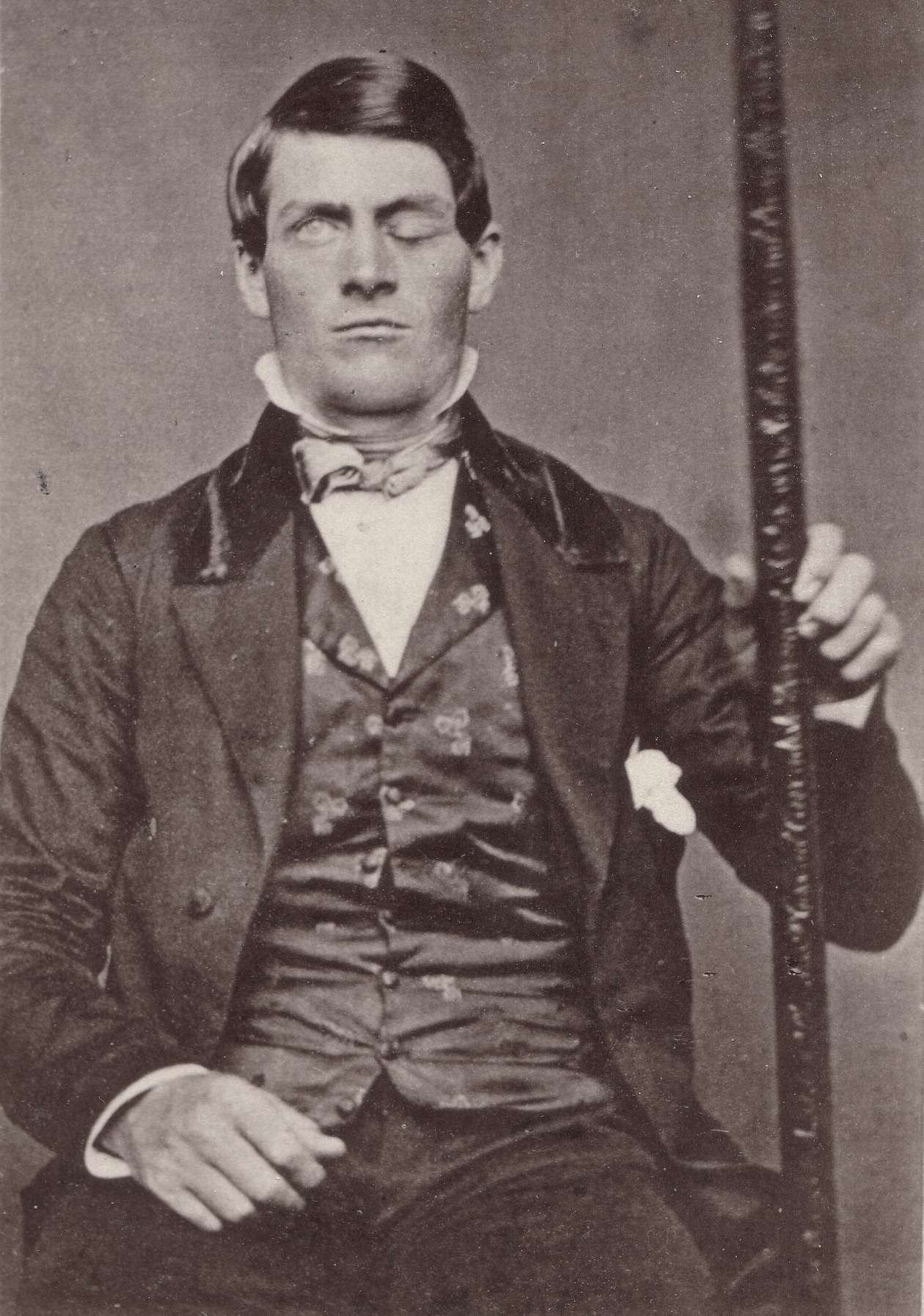
Phineas Gage lived after a freak accident left his brain injured terribly. Never before in history had anyone survived such a lethal injury, leaving them with few lasting health problems but with a totally different personality. This man, who was impaled by an iron rod, not only lived through a horrible accident, but went on to have an active life, where he walked, talked, and even held jobs without trouble ― and yet, he was profoundly changed.
The horrifying story of Phineas Gage

Phineas Gage was an ordinary 25-year-old American, until, in September 1848, an accidental explosion while building railroad tracks put a three-foot iron bar through his skull in a bizarre way. But he didn’t die!
What exactly happened that fateful day?
Work was going well that afternoon, and all the machinery and explosives were working according to plan. Phineas and his men were setting a blast, which involved boring a hole deep into an outcropping of rock, adding blasting power and a fuse, then using a tamping iron (which looks like a giant metal javelin) to pack it deep into the rock.
As sometimes happens, Gage became distracted and let his guard down while doing this routine task. He put himself beside the blast hole, right in front of the tamping iron, which was not yet packed with clay to prevent ignition. He was looking over his shoulder to speak with some men, and had just opened his mouth to say something, when the iron caused a spark against the rock. This spark ignited the powder and there was a massive explosion. Gage was just being careless in the wrong place at the wrong time.
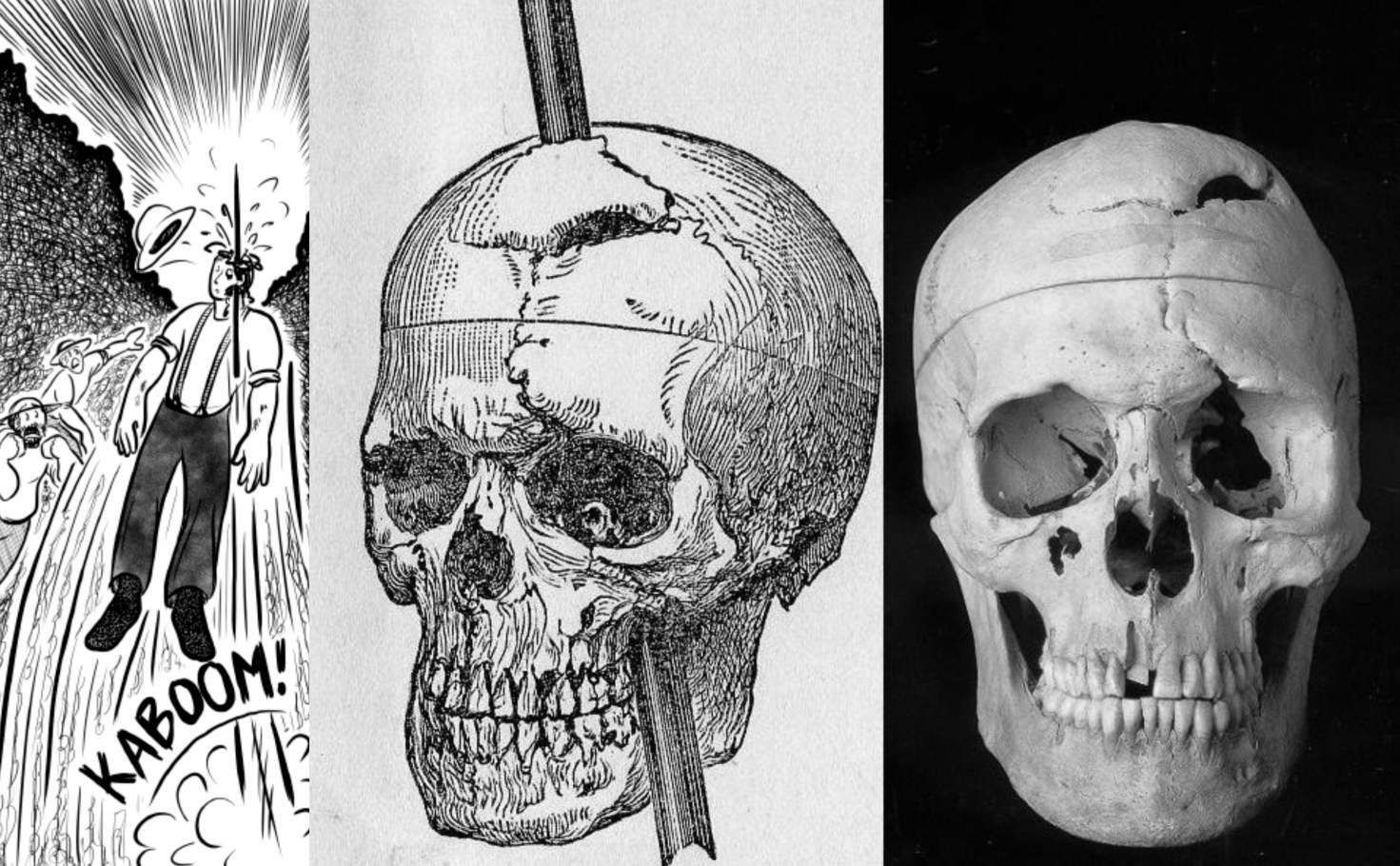
A critical recovery: Fungus started to sprout inside his head
Phineas went through difficult times during recovery after the surgery and almost died of an abscess (infection in the wound, which according to the records reached 250ml of pus, a liquid resulting from the metabolism of bacteria, cell fragments and blood). After nearly three months in medical care, Phineas returned to his parents’ home and began to return to his daily tasks, putting up with half a day of work.
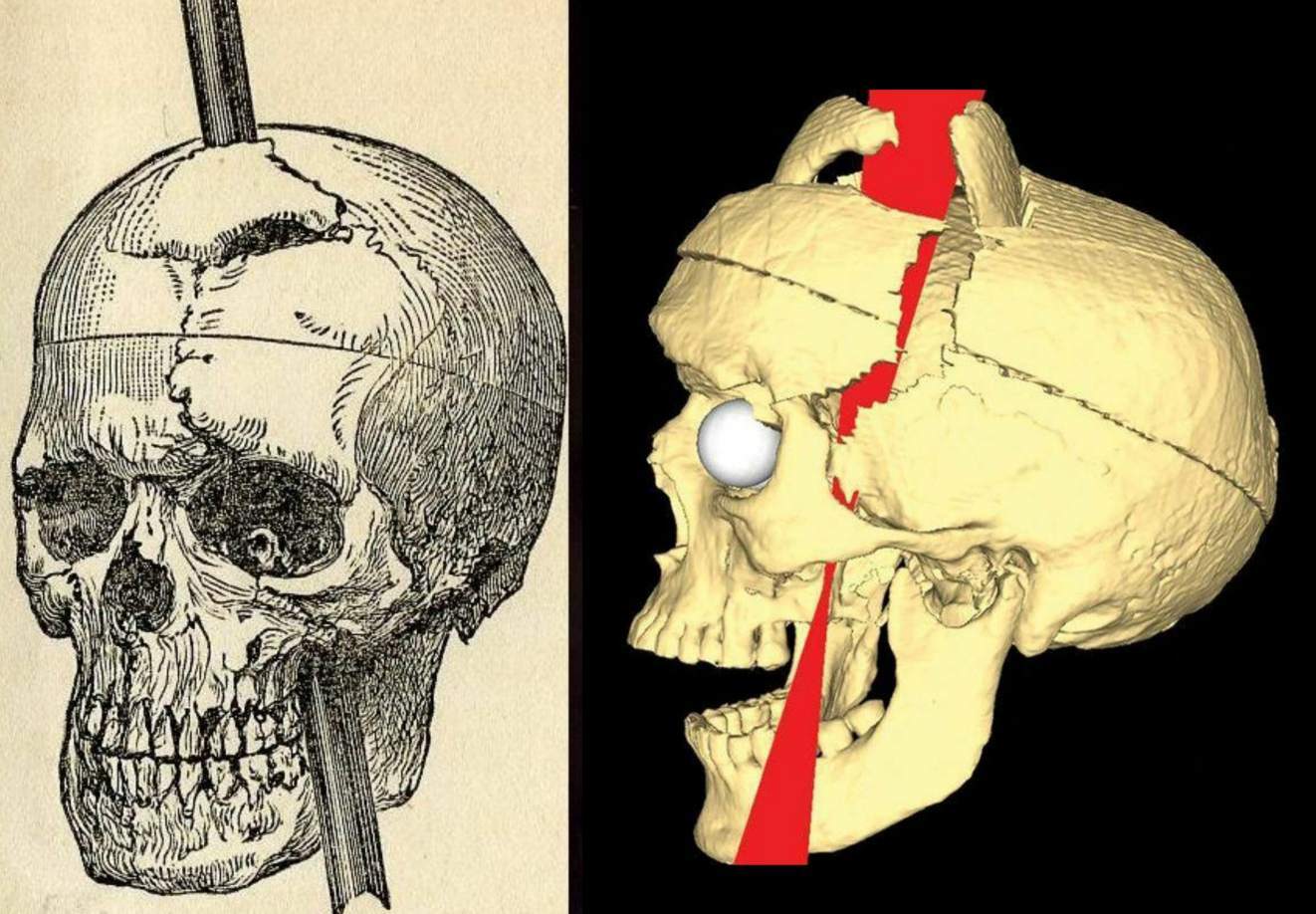
Gage’s behaviour was profoundly changed
However, Gage’s mother soon noticed that part of his memory seemed to be impaired, although according to the doctor’s reports, Gage’s memory, learning ability and motor strength were unchanged. With the passage of time, Gage’s behavior was no longer the same as before the accident. Gage seemed to have lost some of his social tact, and became aggressive, explosive and even profane. The once sweet boy became reckless and rude and abandoned his plans for the future, having not formed a family.
Gage became a living museum exhibit
![Phineas Gage — the man who lived after his brain was impaled with an iron rod! 5 Disfigured yet still handsome".[T] Note ptosis of the left eye and scar on forehead.](https://mru.ink/wp-content/uploads/2021/07/IMG_20210730_163638_compress29.jpg)
Phineas couldn’t get his job back, and for years it became a kind of walking museum, after all how does a man have his brain impaled with a bar and dare to survive? No further damage? It was such a notorious case that for two years the medical community refused to believe! As the case took place inside, the doctor who accompanied Phineas, John Harlow, had to certify the authenticity before lawyers. John and Phineas also travelled to Boston on their way to medical school to discuss the case.
Despite not having a family, Phineas was an independent and active man, having gone to work as a coachman in Chile. Reports indicate that it was through work that his social skills returned and he was increasingly rehabilitated to coexistence.
Phineas Gage’s lifespan was cut short
Unfortunately for Phineas Gage, his lifespan was still cut short, even after surviving such a horrifying accident. In 1860, Phineas began to have epileptic seizures that made it difficult for him to work. He returned to his mother and brother-in-law in San Francisco to rest and rehabilitate, but in May he had a sudden and severe convulsion.
They called a doctor, bled him, and rested him, but the convulsions kept happening. Finally, during one particularly bad epileptic seizure on May 21, 1860, Phineas Gage died. He was only 36 years old. Gage was then buried in San Francisco’s Lone Mountain Cemetery by his family. But the story didn’t stop there..
Gage’s old doctor had his skull dug up!
Dr. Harlow had not seen or heard from Phineas Gage in years, and had pretty much given up hope of ever coming across his famous former patient. However, when he read Gage’s obituary in 1860, it resparked his interest in the case, and he got in contact with the family. But it wasn’t for condolences or sorrows; it was because he wanted to dig up Gage’s skull.
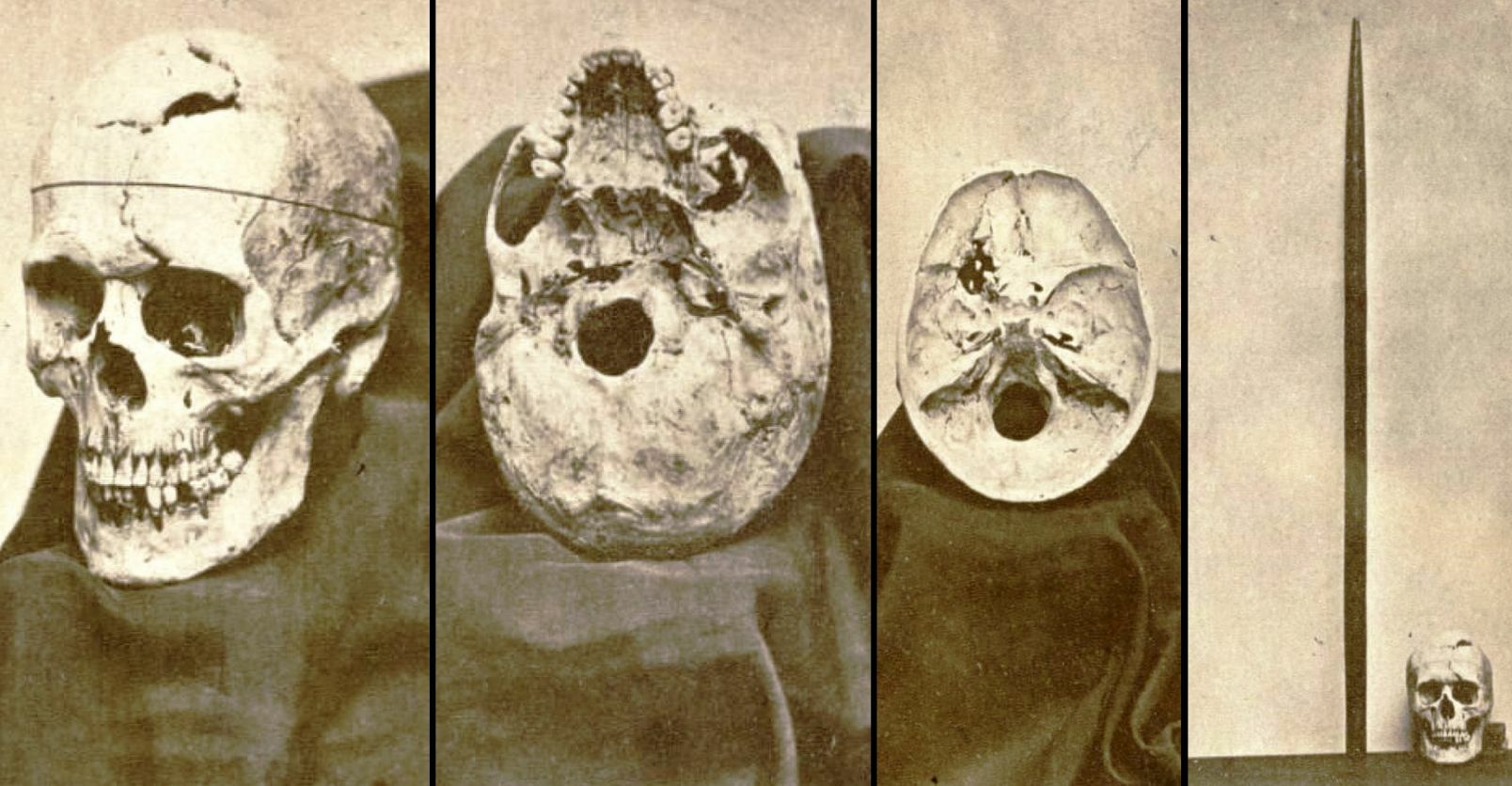
Shockingly, Gage’s mother consented, given that the man had saved her son’s life, and Gage’s head was exhumed in 1967. Harlow took the skull himself, as well as the iron bar that had become Gage’s constant prop, and studied it for a time. Once he was satisfied, and had recorded papers and studies about the incident, he gave the skull and spike to the Harvard University’s Warren Anatomical Museum, where they remain on display to this day.
The Phineas Gage case imparted priceless ideas to medical science
Phineas Gage’s case provided material for two strong chapters of research and debate in the next century: personality as a product of the brain with mind-brain relationships and functions located in specific areas of the brain. After all, if an accident is able to change how a person acts in everyday life by damaging the brain, the personality is then stored in the head.
Some claim that Gage’s case served as a breakthrough for the development of psychosurgery and even lobotomy, however without concrete evidence. It was the Phineas Gage’s case reports that turned attention of scientists to the frontal lobe as a region associated with personality traits, in addition to the possibility of survival after an injury so sudden that, according to the doctor, it “spilled the brain” when he coughed.
The case of Phineas Gage gains attention mainly with the end of phrenology, a pseudoscience that sought to investigate the physical shape of the skull and brain and, from this data, to attribute how intelligent or capable a person could be.
Phrenology was widely used to support racism and white supremacist ideologies, but with increasing evidence that it was nothing more than pseudoscience ― that is, with subsequent analyzes of Phineas Gage’s medical reports of the accident and survival, the “Era localist” of neuroscience.
Before the case of Phineas Gage, Herbert Spencer had already proposed that each brain region could have a designated function and said “Function location is the law of every organization”. However, due to the limited evidence and concrete reports about Phineas, those against the localists also took advantage of the case to promote that “Phineas would have had the destruction of the speech centers without ever having had language or speech impairment”.
Current studies on the Phineas Gage case
Currently, the Phineas accident has been simulated on computers by at least two research groups. In 2004, the reconstruction pointed out that the damage would have been on both “sides” of the brain, but in a more recent 3D version only the left side was affected.
The most recent analysis, in 2012, estimated that he lost about 15% of his brain mass, with the iron rod taking away part of the cortex and part of the inner nuclei of the brain. This justifies the changes in behavior and memory loss, after all, regions such as the prefrontal cortex, which is an important part of decision-making and planning, were damaged.
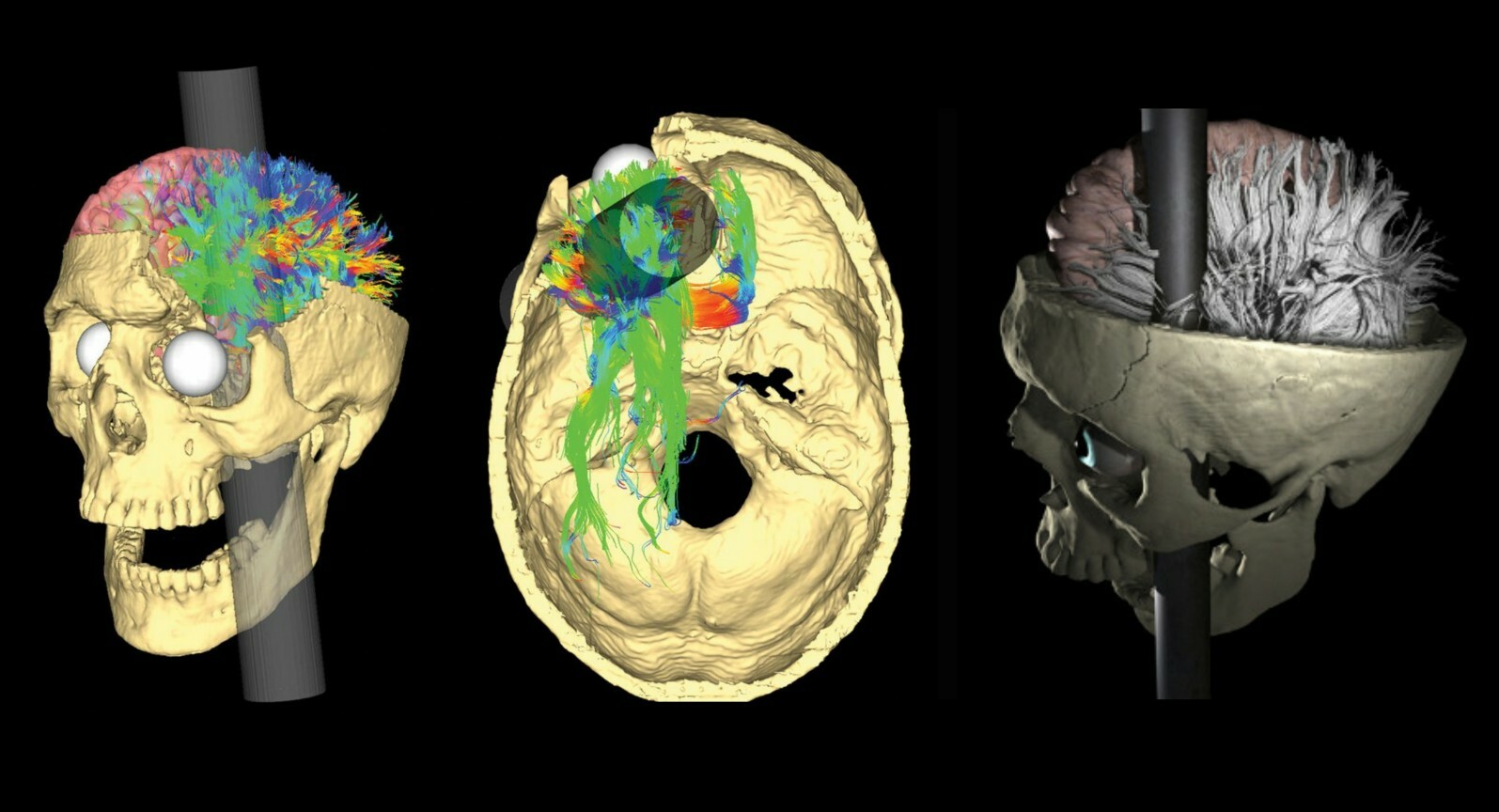
And the study of the brain? Today we know that, just as one swallow does not make a summer, only one region does not perform a whole function by itself. The brain is all connected for one reason: integration.
Each region will have that activity in which it is irreplaceable, but will receive information from other parts of the brain and will also participate in other processes and functions. An example is the base nuclei ― a region located at the base of the brain composed of 4 clusters of neurons, or nerve cells, that is essential for locomotion, but also for processing pleasure.




